
Ashley James: ‘We have a totally warped idea of what a mum should be’
Ashley James says there’s “a total lack of understanding” about feeding babies – and that mothers who pump shouldn’t have to hide away. “With pumping, people should feel confident, just like with breastfeeding, to do that anywhere,” says the DJ and influencer. “If anyone were to have a problem with that, they need to address some deep-rooted issues of why feeding a child would be a problem.” James, who has a two-year-old son, Alfie, and a four-month-old daughter, Ada, with partner Tommy Andrews, argues there’s a huge lack of knowledge about how all-consuming feeding a child with breast milk is – from the hours spent feeding or pumping (an estimated eight to 12 times a day, up to 45 minutes each time for newborns) and “also the fact that you can’t just leave your child”. The 36-year-old says: “People don’t really know about engorgement, mastitis, blocked ducts, supply issues, and all the reasons that people choose to pump.” For example, going back to work. “[People think] ‘Oh just give them a bottle or pump in the morning, and then they’ll be fine’. There’s a total lack of awareness.” The former Made In Chelsea star, who hit the headlines after breastfeeding Alfie live on the Jeremy Vine Show in 2021, is currently using a pump alongside breastfeeding Ada for her to have the option of a bottle, too. “I ended up having to breastfeed [on TV] and there was this really weird backlash – people saying it was attention seeking. [Which is] funny to me. Let’s say that was my plan, I’m a total narcissist and I’d decided this was going to be my chance to get publicity… how would I have managed to convince my three-month-old baby to feed at that exact moment? “Who would I want attention from? Is it because our ‘boobs are for men’ and therefore I’m hoping that men might look at my boobs, because I’ve never wanted that, but I especially don’t want that when I’m feeding my child. I think we have this totally warped idea of what a mum should be. “We are always told, they’re the most important years of a children’s life, those early years, and it’s so formative, but yet I feel like we expect mums to almost keep their children hidden away, but then we expect them to thrive.” On Channel 4’s Steph’s Packed Lunch last month, James used an Elvie Stride breast pump live on air – unbeknownst to viewers and crew. The discreet hospital-grade, hands-free, electric device can be worn under clothing to pump milk without anyone noticing. “I was worried about having blocked ducts and didn’t want to go back to that horrible situation of having mastitis again,” she says. James had the condition when breastfeeding her son two years earlier. “I just wanted to get on with my job, but I needed to deal with the engorgement issue. “It was almost behind the scenes. I was having this huge [issue] with my health – but us mums tend to just get on with the job. “In terms of pumping, I don’t know why we feel like as a society that any form of feeding should be done in private, especially if it’s not bottle feeding. Hats off to all the people who exclusively pump because it’s so constant. She believes it should be celebrated as much as breastfeeding because “it’s really hard to manage, people don’t know the logistical nightmare of it all. “You just don’t see anyone pumping, but you know that people are doing it. So why is it that people are stuck at home? “Obviously lots of people who are trying to feed have to go back to work, for various reasons – maternity pay or maternity leave not being long enough,” she adds. In fact, James started working again, on photoshoots and TV, just five days after the birth of Ada. “I’m self-employed, I don’t get maternity leave – you do what you have to do,” she says. These days she shrugs off negative comments online, but James has experienced real-world shaming for public feeding too. “I was in a children’s attraction in London, breastfeeding Alf, and a member of staff came up to me and asked me to move into the loos. I was like, this is a child-friendly attraction space! “[I said] ‘No, would you eat in a public loo?’. I don’t even want to go to the loo in a public loo, never mind feed my child there!” Ashley James is an ambassador for Elvie. Find out more information about the Elvie Stride at elvie.com. Read More Charity boss speaks out over ‘traumatic’ encounter with royal aide Ukraine war’s heaviest fight rages in east - follow live Host Maya Jama’s glamorous Love Island outfits cost over £10,000 Do you need to watch what you eat when you’re breastfeeding? Sten dos: What you need to know about the quirky wedding trend
1970-01-01 08:00

Teenager hospitalised after USB cable gets stuck inside his penis
A teenage boy was sent to a hospital with an unusual problem - a USB cable was stuck inside his penis. The incident, which was first documented in a urology case report in Science Direct in November 2021, apparently saw the 15-year-old arrive at the hospital as he had apparently been trying to use the cable to measure the inside of his penis. However, the cable had become tangled and knotted while it was inside of him causing him to lose blood through his urine. In the report, the doctors wrote: "The two distal ports of the USB wire were found to be protruding from the external urethral meatus whilst the middle part of the knotted wire remained within the urethra. The patient was an otherwise fit and healthy adolescent with no history of mental health disorders." Sign up to our new free Indy100 weekly newsletter The teenager who is from the UK had been taken to the medical facility by his mother and confessed to the medical experts when she was out of the room that he had used a cable instead of a ruler as a means of 'sexual experimentation'. An attempt to fish the cable out using a metal rod proved unsuccessful to the amount of knotting that had occurred, forcing the team to do surgery on the boy in order to retrieve the cable. They did this by cutting open the section between the genitalia and the anus so they could access the area where the cable was stuck. In the report, the doctors explain the procedure as follows: "A longitudinal peno-scrotal incision over the palpable foreign body was made and careful dissection was undertaken through deeper tissues, splitting the bulbospongiosus muscle. Both ends of the wire were pulled out successfully through the external urethral meatus." They add: "Both ends of the wire were pulled out successfully through the external urethral meatus." Thankfully the young man recovered well from the surgery and was discharged shortly afterwards. In their notes, the urology doctors admit that although cases like this are not out of the ordinary, particular cases like this are considered to be unusual. They state: "Sexual experimentation and gratification, as well as underlying mental disorders, are considered the main causes of retained foreign bodies in the urethra and bladder. Management varies depending on the shape and size of the object, and the mechanism of insertion." Have your say in our news democracy. Click the upvote icon at the top of the page to help raise this article through the indy100 rankings.
1970-01-01 08:00
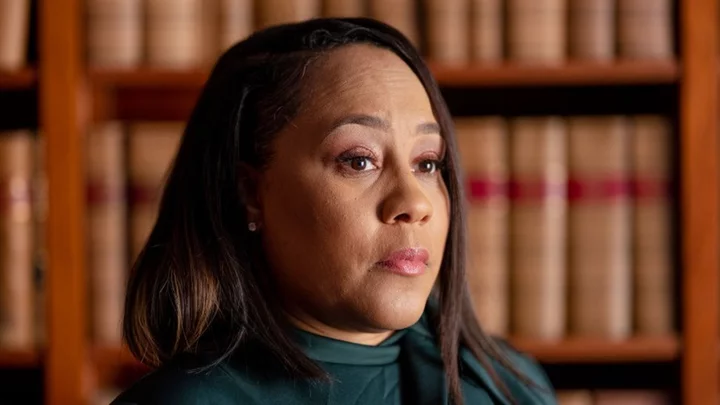
Georgia prosecutor Fani Willis reports racist threats over Trump case
Georgia lawyer Fani Willis has warned of threats as a decision on charges for Donald Trump looms.
1970-01-01 08:00

Jaw-dropping video takes viewers down to the deepest place on Earth
A mind-boggling video has shown people just how far down the deepest place on Earth is, and it is utterly terrifying. The jaw-dropping video came from a trailer for a film that features Titanic director James Cameron, who seems to have a thing about the deep ocean. In the documentary, Long Way Down: Mariana Trench for National Geographic, Cameron took part in what was called the Deepsea Challenge which saw him dive to the bottom of the Mariana Trench in the western Pacific Ocean. The Mariana Trench is some 7 miles down and is deeper than Mount Everest would be if it were pointing down into the Earth. The bottom of the trench is called the Challenger Deep and is the deepest point known on our planet. For the attempt, a submersible was built to withstand the pressure in the deepest part of the ocean and trailers for the documentary terrifyingly showed just how far down the trench is. The video revealed it took Cameron around 90 minutes to reach the bottom of the 7-mile deep trench. In a condensed 1-minute video summarising the descent, the clip continued to give facts about the ocean in a graphic. Sign up to our free Indy100 weekly newsletter Long Way Down: Mariana Trench | National Geographic www.youtube.com 90 per cent of all ocean life lives between the depths of 0 and 660ft. A depth of 800ft is the dive depth of a nuclear submarine. Continuing on from that, 1,044ft down is the deepest ever recorded scuba dive, while at 3,300ft the last trickle of sunlight begins to fade. As has been in the headlines recently following the implosion of the OceanGate submersible, the Titanic sits at a depth of 12,467ft – just over one-third of the depth of the Mariana Trench. At 36,070ft, the bottom of the Mariana Trench has been visited by only a handful of people, one of whom is Hamish Harding, the British billionaire who died onboard the Titan submersible in June 2023. Have your say in our news democracy. Click the upvote icon at the top of the page to help raise this article through the indy100 rankings.
1970-01-01 08:00
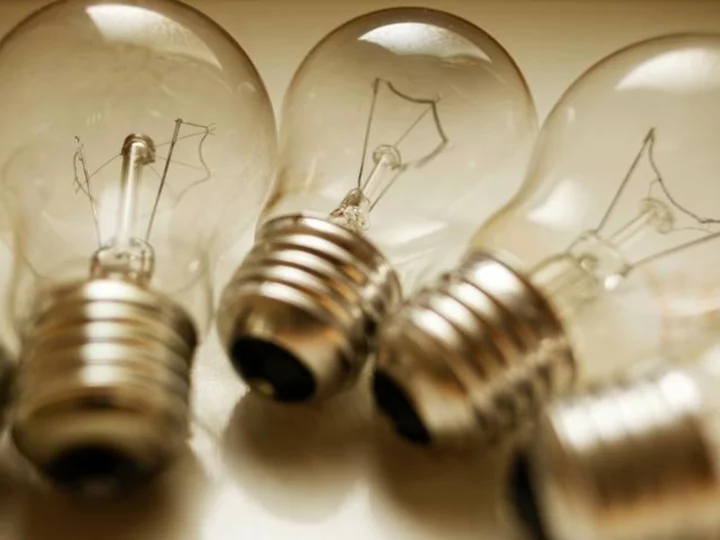
What you need to know about the incandescent light bulb ban
America's ban on incandescent light bulbs, 16 years in the making, is finally a reality. Well, mostly.
1970-01-01 08:00
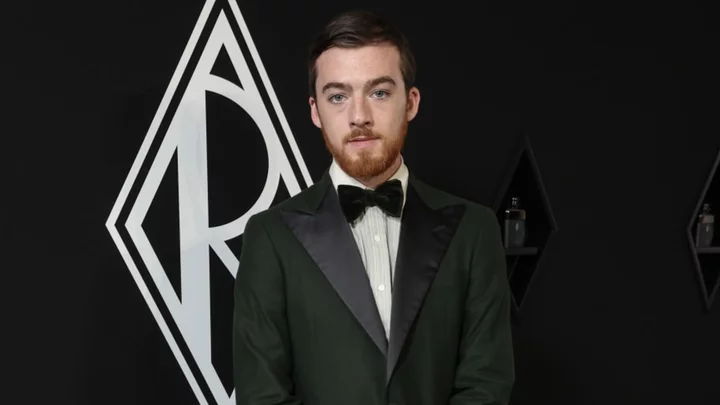
Roundup: 'Euphoria' Star Angus Cloud Dead at 25; USWNT Advances at World Cup; Latest MLB Trade Deadline Rumors
"Euphoria" star Angus Cloud found dead at 25, USWNT struggles to advance at World Cup, all the latest MLB trade deadline rumors and more in the Roundup.
1970-01-01 08:00
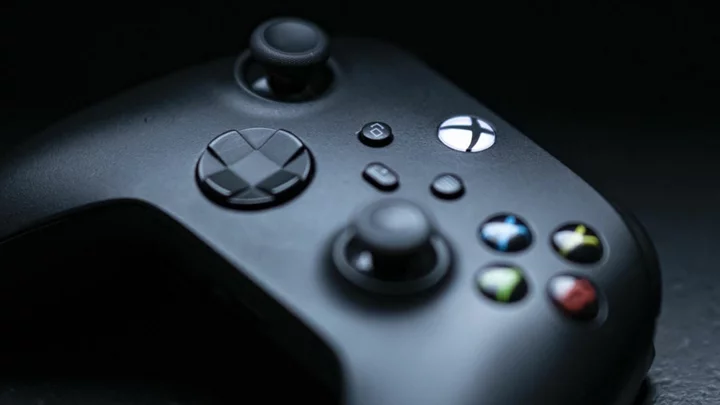
Need to Repair an Xbox Controller? Microsoft Will Sell You the Parts
Microsoft is expanding its self-repair program to include Xbox controllers. As The Verge reports, Microsoft
1970-01-01 08:00
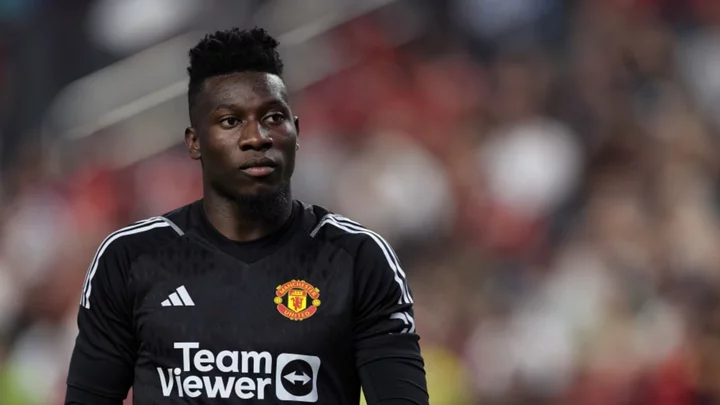
Andre Onana sends warning to Harry Maguire after pre-season rant
Andre Onana has insisted that he'll 'demand a lot' from Harry Maguire after he was seen ranting at the defender in pre-season.
1970-01-01 08:00

Do you need to watch what you eat when you’re breastfeeding?
Most new mothers try to breastfeed their baby at first, unable to ignore the oft-repeated mantra ‘breast is best’. However, despite the vast benefits of breastfeeding that are being highlighted during World Breastfeeding Week (August 1-7), including protecting the baby from infection and disease, and health benefits for the mother, a huge proportion of mothers quickly give up. Figures from the last UK-wide Infant Feeding Survey (albeit from 2010) found that while more than three-quarters of women start breastfeeding when their baby’s born, this drops to 55% doing any breastfeeding at six weeks, while at six months, just 34% do any breastfeeding, and only 1% breastfeed exclusively. There are many reasons for this, but Public Health England research found more than half of mothers were concerned they might need a special diet to breastfeed, and a similar proportion were worried that breastfeeding meant they couldn’t tell if their baby was getting too much or too little milk. But should new mums really be concerned about eating or not eating specific foods if they’re breastfeeding, and can their diet affect how much milk their baby’s getting? The simple answer is no, as long as they’re eating a healthy balanced diet, says the baby charity Tommy’s. Because while the NHS warns pregnant mothers to avoid specific foods like soft blue cheeses, undercooked meat, liver, pâté and game meats, there are no foods breastfeeding mums must not eat, says Tommy’s. “There are a lot of myths out there around breastfeeding which can leave new parents unsure of what to do and where to turn,” says Tommy’s midwife Sophie King. “If you choose to breastfeed or combination feed, there’s no special foods you need to have, but a varied diet can help our bodies make the best quality milk for our babies. This typically includes lots of vegetables, fruits, grains and proteins. It’s also important that you stay well-hydrated with plenty of water. “ In addition, she says it’s recommended that mothers who are exclusively breastfeeding take a daily vitamin D supplement. An occasional alcoholic drink is unlikely to cause any harm if you’re breastfeeding, says King, but she warns: “Try not to have more than one or two units of alcohol once or twice a week. There’s some evidence that regularly drinking more than two units of alcohol a day while breastfeeding may affect your baby’s development.” In addition, caffeine can reach babies through breast milk, and King explains: “Caffeine is a stimulant, so if you have a lot, it may make your baby restless and keep them awake.” Caffeine occurs naturally in lots of foods and drink, including coffee, tea and chocolate, and it’s also added to some soft drinks and energy drinks, as well as some cold and flu remedies. “There’s not enough information to say how much caffeine is too much, and babies respond to caffeine differently,” says King. “But it’s a good idea to reduce how much caffeine you drink, especially when your baby is less than six months old.” But does what a mother eats affect her milk supply? Again, the answer is no, explains Justine Fieth of the breastfeeding support charity La Leche League GB (LLLGB). “There are no particular foods you need to eat to increase breastmilk – milk production is determined by the amount of milk removed from the breast,” she says. Breastmilk is made in the mother’s breasts, directly from her blood, rather than from the food she eats. Fieth says LLLGB recognises the importance of a varied and healthy diet, and stresses that it’s important for mothers to speak to a qualified breastfeeding supporter if they feel they have low milk supply. “Unless there’s a physical or physiological reason for low milk production, a mother who breastfeeds on cue will be able to produce enough milk for her baby, regardless of what she eats,” she explains. “In certain circumstances, medications can be used to increase supply, but diet plays a minor part – though obviously, eating a varied, healthy diet is always a good thing.” For breastfeeding support, contact the National Breastfeeding Helpline on 0300 100 0212. Read More Charity boss speaks out over ‘traumatic’ encounter with royal aide Ukraine war’s heaviest fight rages in east - follow live Sten dos: What you need to know about the quirky wedding trend Why have the birds disappeared from my garden? Psoriasis Awareness Month: Everything you need to know
1970-01-01 08:00
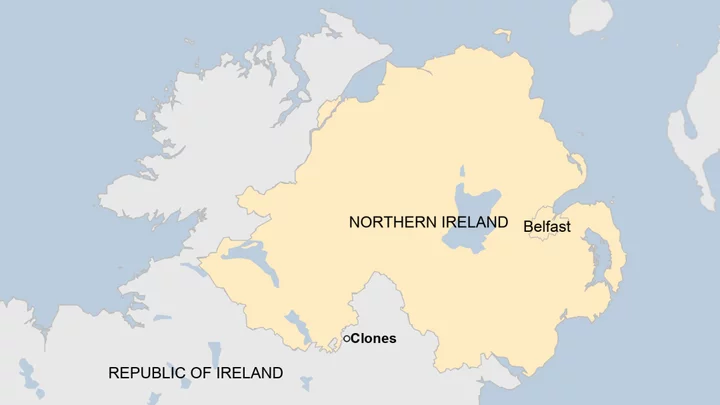
Two teens die in crash on way to school dance in Monaghan
There is devastation after a vehicle with five people on board crashes on the way to a school dance.
1970-01-01 08:00

Giant alien-like virus structures with arms and tails found in the US
If there’s one thing the Covid pandemic taught us, it’s that viruses shouldn’t be underestimated. People are, therefore, taking note after scientists discovered a whole new range of giant virus-like particles (VLP) that have taken on “previously unimaginable shapes and forms.” The microscopic agents, resembling everything from stars to monsters, were found in just a few handfuls of forest soil. The sample was collected from Harvard Forest, near Boston in the US back in 2019, and flown over to Germany’s Max Planck Institute. Sign up for our free Indy100 weekly newsletter There, its contents were carefully examined and, at the end of last month, the findings were finally released. The team of researchers behind the investigation said that their discoveries “question our current understanding of the virosphere” and “imply that giant viruses employ a much wider array of [...] structures and mechanisms to interact with their host cells than is currently known.” In other words, the results prove how little we actually know about the universe of viruses that exist here on Earth. They also noted that the origins and functions of the different viral structures they found remain unknown – so there’s still plenty of mystery left to solve. The team at the Max Planck Institute, led by Dr Matthias Fischer, were amazed to find “an astounding diversity of virus-like particles (VLP)," in such a small sample. "Amazingly, we found that a few hundred grams of forest soil contained a greater diversity [of the structures] than that of all hitherto isolated giant viruses combined," they wrote. These included one type that resembled a supernova: Another that the teamed named the “haircut”: Another called the “turtle” morphotype: Another christened the “Christmas star”: And another called the “Gorgon” – named after the sisters with snakes for hair from Greek mythology: To clarify, VLP are molecules that closely resemble viruses, but they differ from them in one crucial way: they are non-infectious. This is because they contain no viral genetic material. Still, as virus-host systems, they are key to better understanding their potentially noxious counterparts. “[Our] findings imply that giant viruses employ a much wider array of [...] structures and mechanisms to interact with their host cells than is currently known,” the authors wrote. They ended their paper: “This fascinating window into the complex world of soil viruses leaves little doubt that the high genetic diversity of giant viruses is matched by diverse and previously unimaginable particle structures, whose origins and functions remain to be studied.” Clearly, there’s still plenty of work to be done. Have your say in our news democracy. Click the upvote icon at the top of the page to help raise this article through the indy100 rankings.
1970-01-01 08:00

Get Back! Paul McCartney to tour Australia for first time in 6 years
Sir Paul McCartney is to head on tour to Australia for the first time in six years, with plans to visit Sydney, Melbourne, Melbourne, and Brisbane.
1970-01-01 08:00
